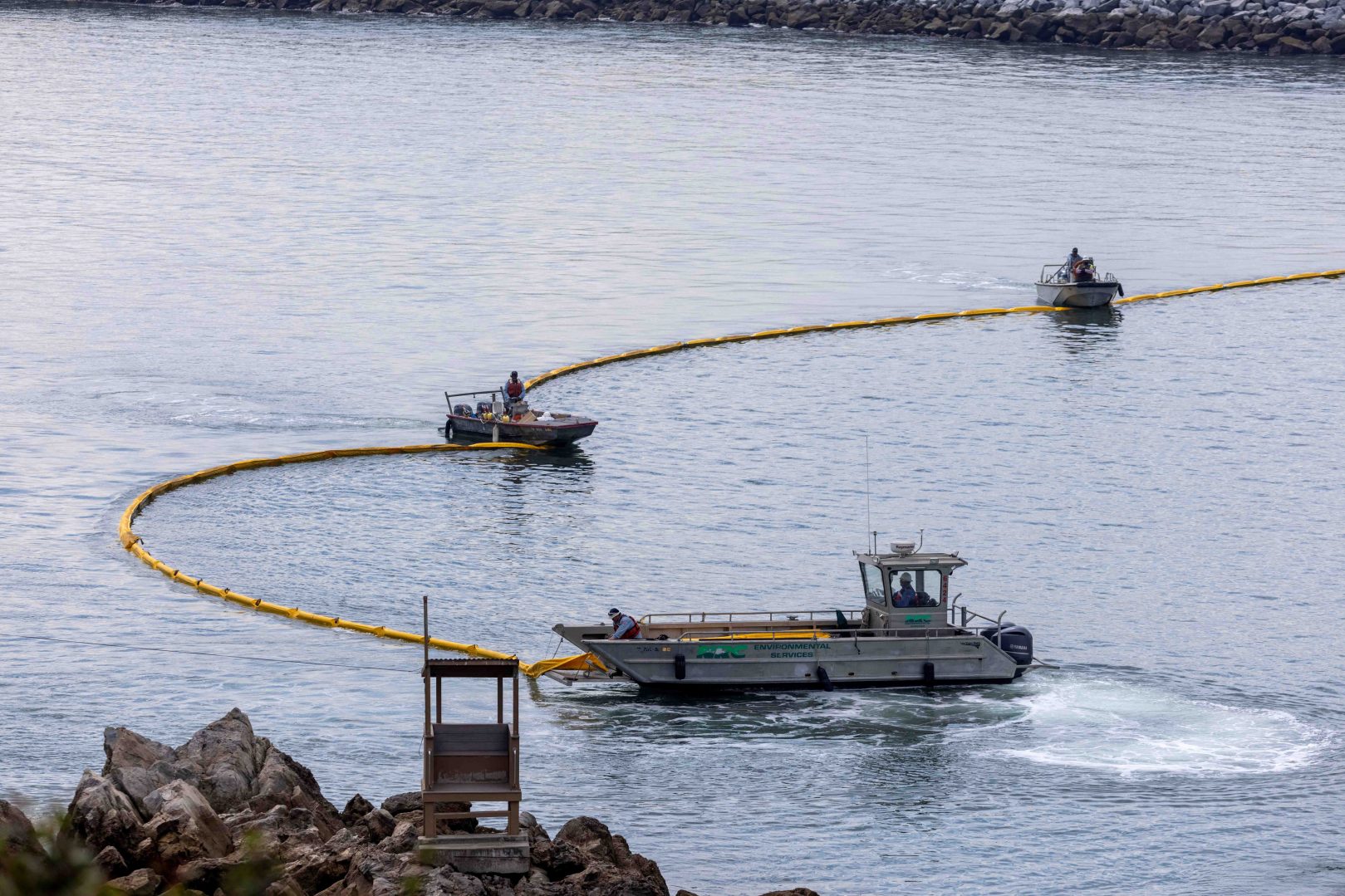
Capt. Rebecca Ore, US Coast Guard: “We’ve determined that approximately 4,000 feet (1.2 kilometer) of the 17.7 mile (28.4 kilometer) pipeline has been displaced and it’s been laterally displaced by 105 feet. That’s what we know about the pipeline it was determined by a remotely operated vehicle. Subsequent to that, divers were sent down. These were commercially procured divers. They were sent down to assess that pipeline. What they further located was a 13 inch (33 centimeter) split in that pipe, on the side of the pipe that is a likely source of release of oil. What we can say is that from that 13 inch split in that pipeline, there is no visible product that can be observed coming from that line. So there is no oil coming out of that line, from that split on the pipeline.”
“On Friday evening, the national response center released a notification to pollution response agencies to include the United States Coast Guard. That was a report of an unknown sheen of, with an unknown source offshore of Huntington Beach, California. These type of reports are fairly typical for pollution response agencies and they usually result in an initial investigation which is what happened in this case. It is a phone investigation to contact the reporting source and determine any additional or amplifying information that will allow us to clarify and determine follow up actions with that report. At that time it approaches nightfall, sheens can be very difficult to see on the water. The information from the reporting source that Coast Guard investigators spoke with was inconclusive.”
Lt. Christian. Corvo, California Dept. of Fish and Wildlife: “As of today, we have six SCAT (Shoreline Cleanup Assessment Technique) teams assessing shoreline impact. Those teams are made up of three individuals and they’re at this time assessing from Laguna Beach all the way down to San Clemente based on potential trajectories, where this oil made landfall. Those teams report back to the command each day and based on their recommendations and strategies we deploy teams of cleanup crews in the morning. Currently, we have 16 teams of shoreline cleanup teams consisting of a total of 300 cleanup personnel doing those hand cleaning, collecting oily debris, oily sand, any impacted shoreline.”










